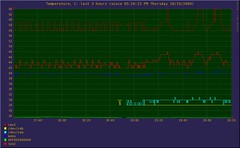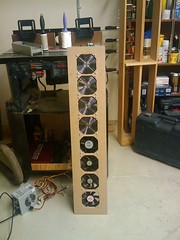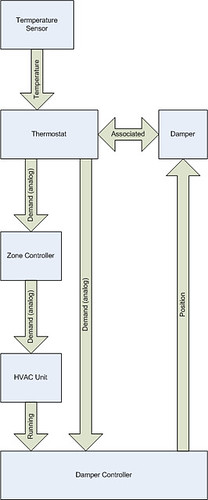Some entities (thermostat, PID controller that is a part of it, zone controller to name a few) produce signal that is more complicated than DataSample<Double>, which is just about as complex as DataLogger can accept.
In order to break down complex signals to simple components, splitters exist. Here's how you can configure one (irrelevant beans omitted):<bean id="thermostat-6EE055000000" class="net.sf.dz3.device.model.impl.ThermostatModel">
<constructor-arg type="java.lang.String" value="1-Wire 6EE055000000"/>
<constructor-arg type="net.sf.dz3.device.sensor.TemperatureSensor" ref="temperature_sensor-6EE055000000"/>
<constructor-arg type="net.sf.dz3.controller.pid.AbstractPidController" ref="pid_controller_6EE055000000"/>
</bean>
<bean id="splitter-thermostat-6EE055000000" class="net.sf.dz3.device.model.impl.ThermostatSignalSplitter">
<constructor-arg index="0" ref="thermostat-6EE055000000"/>
</bean>
<bean id="rrdlogger_thermostats" class="net.sf.jukebox.datastream.logger.impl.rrd.RrdLogger" init-method="start">
<constructor-arg index="0" type="java.util.Set">
<set>
<ref bean="splitter-thermostat-6EE055000000"/>
</set>
</constructor-arg>
<constructor-arg index="1" type="java.io.File" ref="rrdbase_thermostats"/>
<constructor-arg index="2" type="java.io.File" ref="rrdtool"/>
</bean>
The above example will make the rrdlogger_thermostats data logger automatically subscrube to all signals that are produced by thermostat-6EE055000000 and create a channel for each of them (in this particular case, they will be named "1-Wire 6EE055000000" and "1-Wire 6EE055000000.calling").
IMPORTANT: Make sure you don't create the controller you're trying to monitor with scope="prototype" - you will end up with a new instance, not connected to anything and not doing anything till the end of time. Goes without saying that you can not reuse controller instances for different entities - you will have to create diferent instances with diffent bean IDs.Splitters for other complex entities will be written as need arises - keep your eye on the code base. One good way to do that is to subscibe to commits RSS feed.




